You went through all the paperwork, and you got yourself the perfect dog – a rescue dog. Now, you have to get ready for that special moment of your new dog getting to your home.
This is a very important part of getting a new dog.
The way you introduce him to your home is crucial in making your new dog feel safe. Your home is very different from a shelter.
The smells are different, the sounds are different, and people, furniture, and the floor are different. Everything is brand new to your rescue dog, and you have to introduce him to the new home calmly and in the right way.
Otherwise, we might unintentionally imprint the wrong new pictures in the dog’s mind, which can lead to a lot of behavioral issues.
Let’s see what the 9 most crucial steps are in introducing a rescue dog to a new home.
Don’t worry – they are easy to achieve, and all they actually take is patience and lots of love from your side.
Introducing A Rescue Dog To A New Home
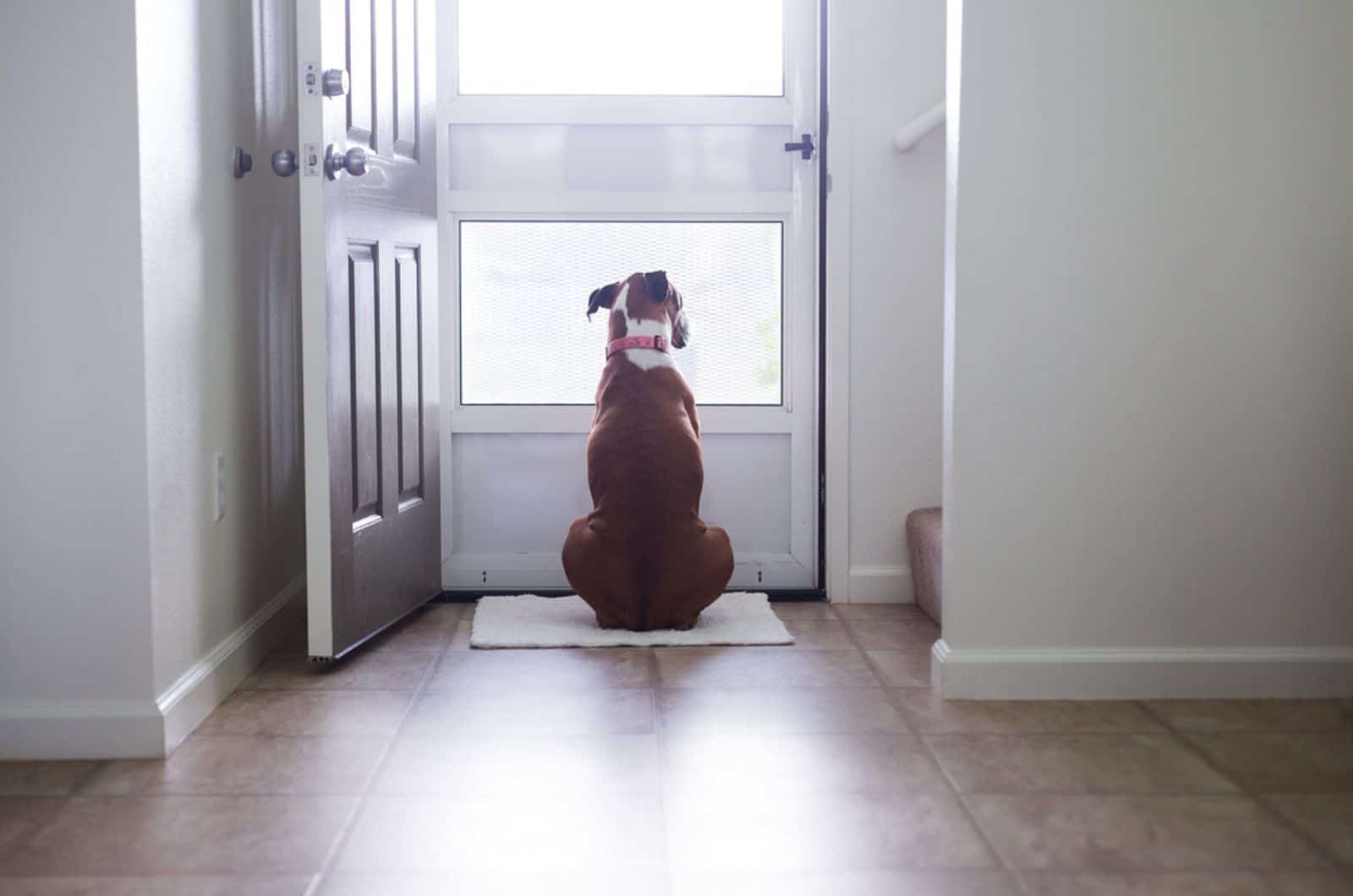
The best advice you can hear in these situations is to put yourself in your dog’s shoes. Just take a look at the situation in front of you from your new dog’s point of view.
What will you see?
New faces, smells, sounds, different enclosed spaces, a brand new open area (yard, street, etc.), and, simply said – everything is unknown and yet to be labeled safe.
Another good piece of advice is that all rescue dogs act differently, and they can show different behavior from what you saw at the shelter. This is normal, and it doesn’t mean you have to take your new dog back to the shelter.
Some dogs will get used to a new home quickly, but for some, it might take more than a couple of weeks.
This applies to all dogs, no matter if they are purebred or mixed dogs – they all have their unique set of traits and ways of reacting to new situations.
Here are 9 steps to make the transition easier, and help your dog feel safe in its new home, learn to trust you, and regain his confidence.
1. Preparation
If you know you are bringing a rescue dog to your home today, make sure everything is prepared for his arrival. It would be best if you could clear your schedule for that day. The perfect option would be to have a few days off, but I know that’s not easy to do.
So, you can make sure to do it after work so that you can be there for your new dog in such a special moment in his life.
Other things you should do before bringing a rescue dog to your home:
- Remove hazardous objects, toxic plants, cleaning liquids, etc.
- Prepare one room where the rescue dog will spend his first days
- Stock up on supplies (dog food, treats, wet wipes, etc.)
- Make your home as calm as possible
- Don’t call your neighbors or friends to meet the dog (you can do that when the dog feels safe)
These first steps are very important when you introduce a rescue dog to a new home. It makes your place look safe and calm. It would be quite different if you were hectic, going out to buy food, making a fuss by calling everyone to see your new dog, etc.
2. First, A Short Walk
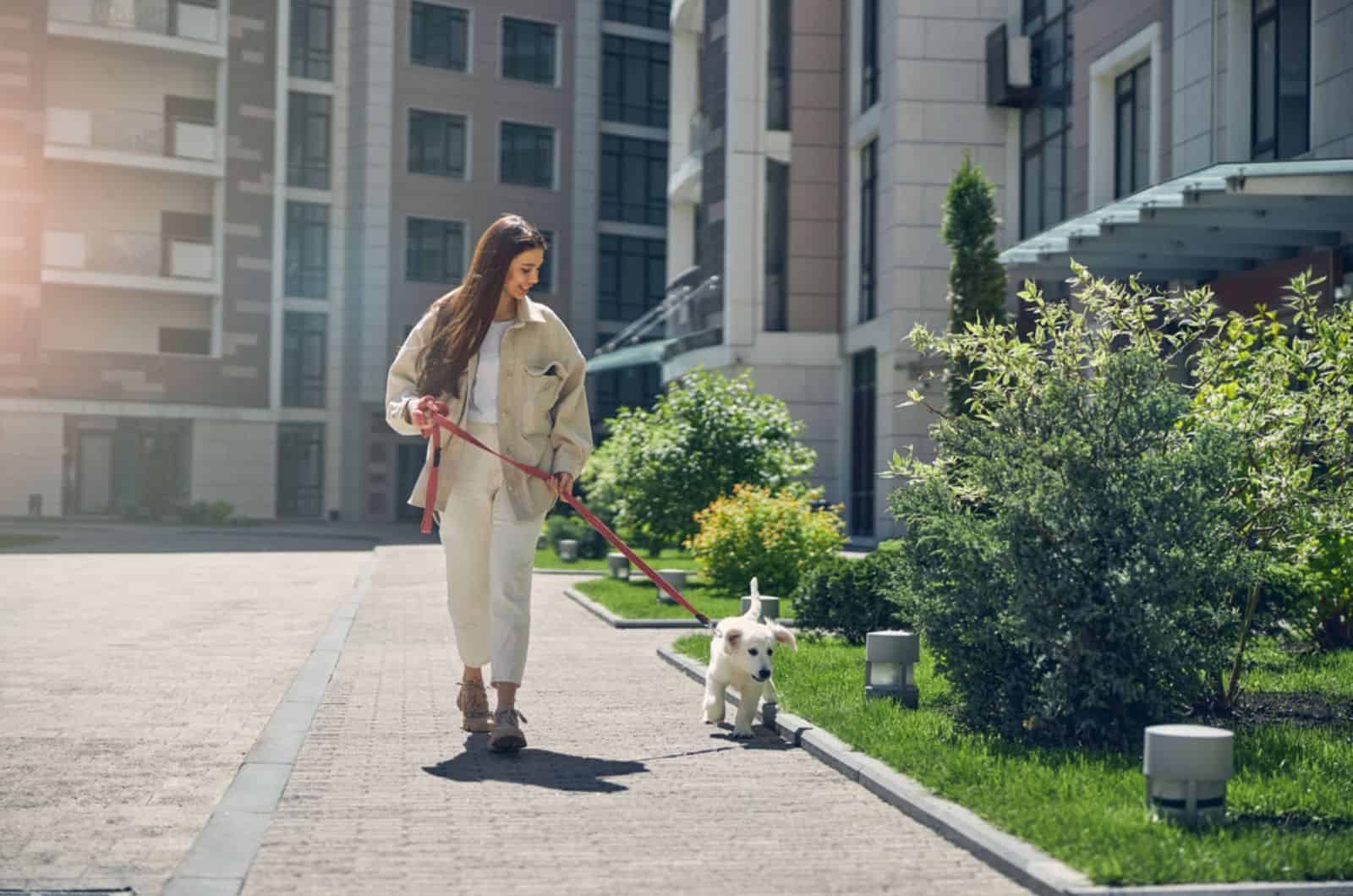
It is recommended that if your dog has no health issues, you should give him a little walk around your back yard or front yard before bringing him inside your home. If you live in an apartment, let him sniff the stairs and the street, and walk around for a bit.
This prepares the dog for entering new territory. This slows the process, and makes the dog more relaxed.
This is not necessary, but it makes the dog calmer and more confident. Of course, you do this only if your dog is healthy and can walk properly. Also, the goal is not to take him far away – just in front of your door or in your yard.
3. No Other Pets
One of the things that most dog owners do is introduce a new pet to other pets they already have. This is not how you do it.
Leave your pets in another room and close the door. Better yet, if you have dogs that are crate trained, put them in crates.
You will have plenty of time to introduce your rescue dog to your old pets. It is the same if you have cats or bunnies, or any other type of animal as a pet.
Don’t introduce them yet.
Read Next: Younger Dog Attacking Older Dog
4. Don’t Show The Entire House
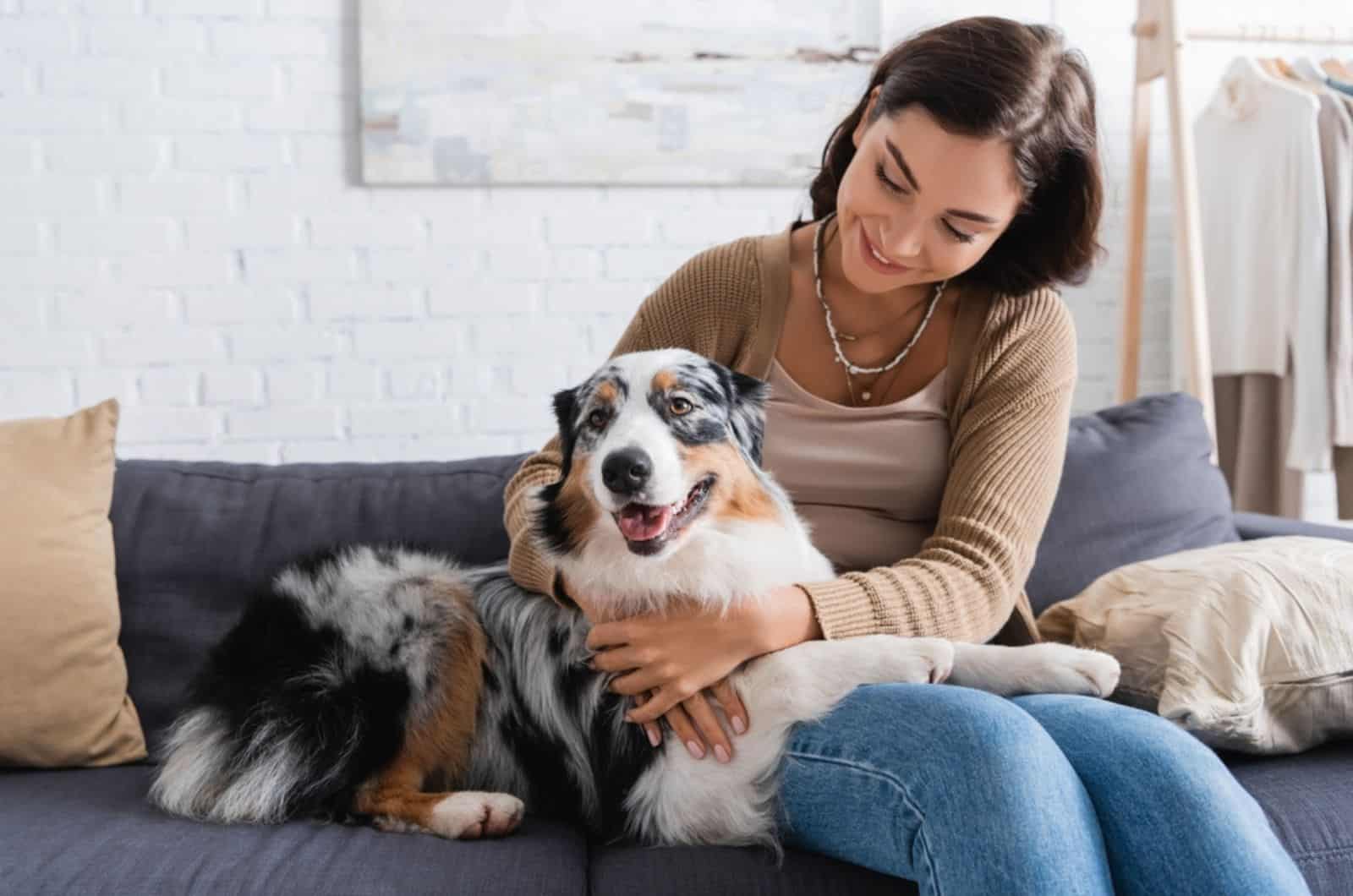
When you bring a rescue dog to a new home, don’t let him roam around the house freely. It is important to put him in a room where he will be staying for a couple of days, and not letting him explore the entire house.
Show him just the room he will be sleeping in, eating in, and generally spending his entire time in for the first couple of days.
The perfect option is a baby gate or a dog gate you can put up and seclude the area. Your new dog will feel safe, and you can keep an eye on it.
This room will also be the place where you will teach your new dog all the rules.
5. Frequent Potty Time
Another step you need to follow is taking your rescue dog on potty breaks every hour, even if the dog doesn’t need to go.
You won’t be staying long… just 3 to 5 minutes outside, and go back in. Of course, always use the leash.
We do this for a couple of reasons. One of them is that we don’t know if the dog is potty trained or not. Another reason is that even if it is, potty time in a shelter is much different than in your home.
So, every time you take your dog outside, give him a treat and say, “good boy” to let the dog know where the right place is to pee.
Read Next: My Dog Is 6 Months Old And Not Potty Trained
6. Crate Training
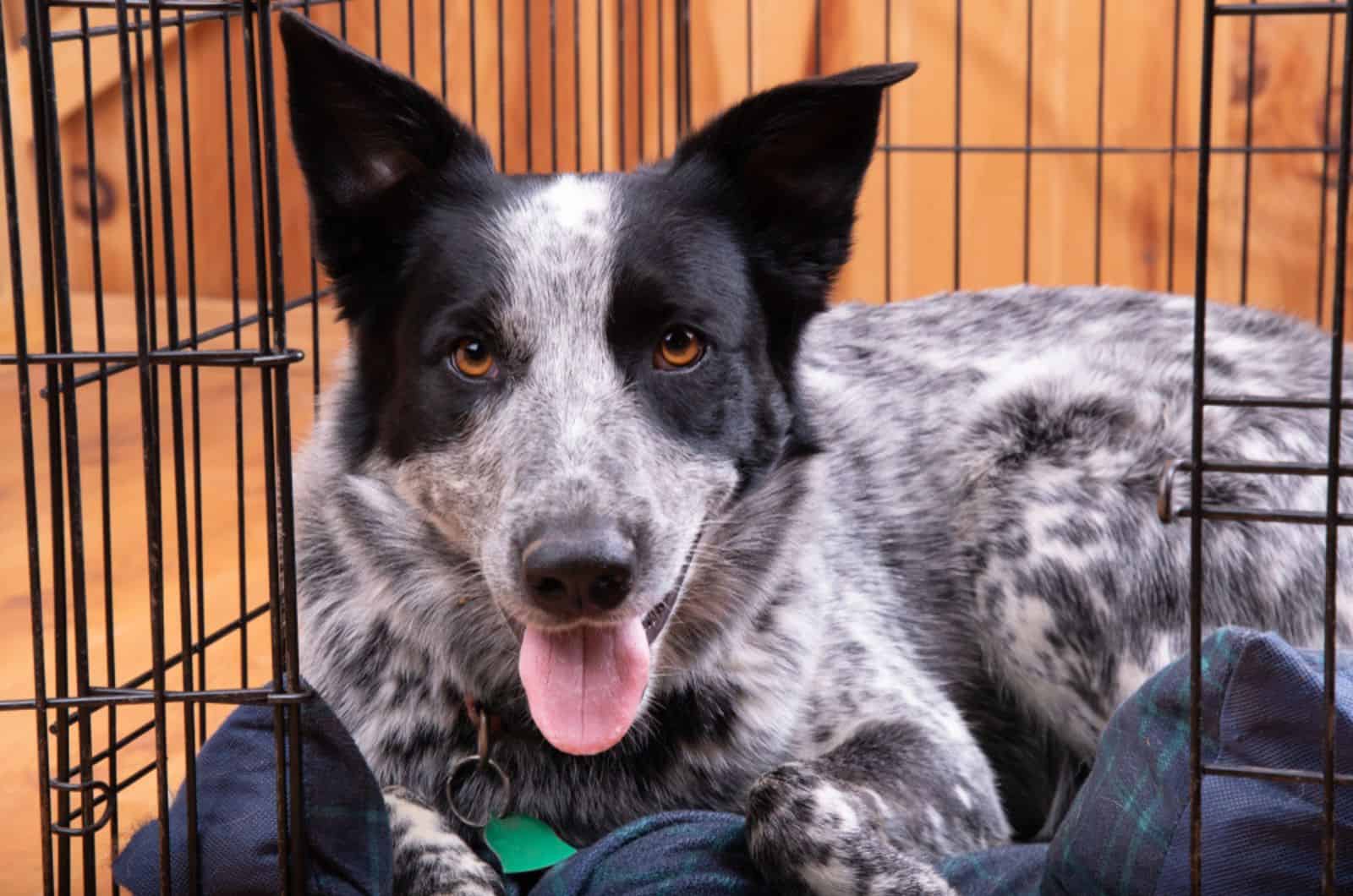
It is best to start crate training right away. But, do it slowly, and without any pressure. We don’t want to scare the dog or make him go inside a crate. So, keep the crate open, and put some treats inside. Let the dog go inside on his own… don’t push him in.
A dog needs to understand on his own that a crate is a good, safe, and calm place for him to lie down, sleep, and eat.
Read Next: Why Does My Dog Suddenly Hate His Crate?
7. Redirected Focus
When you bring a rescue dog to a new home, he doesn’t know the rules. Your new dog doesn’t know what is alright to do and what he shouldn’t do. You are here to tell him that. Better yet, show him.
So, start right away. Just don’t use punishment as a form of teaching. Use redirected focus. What does this mean?
If your dog jumps on the bed, and you don’t want him to jump on the bed, don’t yell or shout. Say “stop” and move your dog from the bed. When he’s on the floor, give him a treat or a chewing toy and say, “good boy”!
If your dog starts chewing what he shouldn’t chew, do the same thing. Say “stop”, give him a treat so that he has to get up and move away from the thing he was chewing, and say “good boy”!
Basically, you are using positive reinforcement combined with redirected focus.
8. Keep An Eye On The Dog
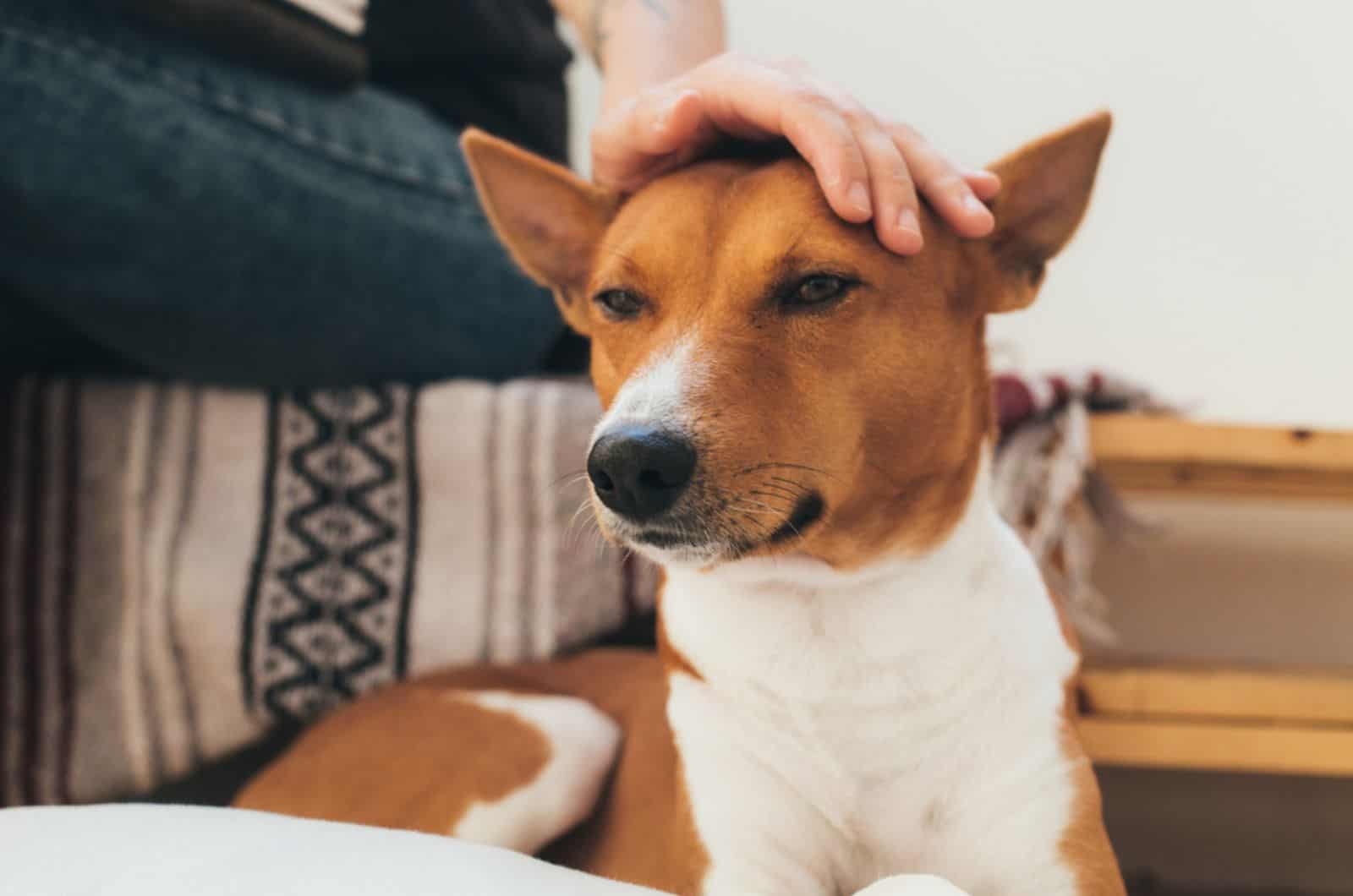
Starting from the time a rescue dog enters your home until he learns all the rules and feels confident and safe, you have to keep an eye on him.
That’s why he should be in one room for the first couple of days, even a week or two. When you want to introduce other parts of the house, keep him on the leash. And, after he finishes exploring, bring him back to the safe spot – the room you picked where he will spend his time in.
Because we can’t always keep an eye on our dogs, if you have to leave the room for a longer period of time, put your dog behind baby gates.
Leave him treats and toys to play with.
You have to pay extra attention until you know for sure that the dog has learned the rules, and won’t regress back into the anxious and scared rescue dog he might have been before.
9. Patience Is The Key
Bringing a rescue dog to your home is not an easy task. Sometimes, everything goes well and the dog shows his true, lovely colors right away.
But, in most cases, a rescue dog needs transition time that requires patience and lots of love from you.
You need to spend quality time with your new dog, especially when you wake up, and just before you go to sleep. These two periods of time are important in making a bond with your dog. Of course, you will be calm and show love during the whole day.
As I already said, patience is the key. Don’t rush your dog. He will show his love and affection in his own way and in his own time.
No matter how long you wait, you won’t regret it… that’s for sure.
Final Thought
Most rescue dogs are shy and reserved the first time they enter a new home. It is normal behavior, and it is something you need to be prepared for.
Everything should be done in baby steps… slowly, calmly, and confidently. You want to show your new dog that it is safe and loved, but you need to stay the alpha in your home as well.
All of this can be done with positive reinforcement combined with redirected focus.
No need for violence and rushing your dog to do anything.
Even if it takes more than a month to get your dog to completely trust you and feel safe in your home, don’t give up.
A dog is not a product you can return if it’s not what you thought it would be. They are living beings with emotions.
It might take time and some work, but I truly believe that a dog is the best thing that happened to you (and any other human). Keep your new one safe, healthy, and loved.















